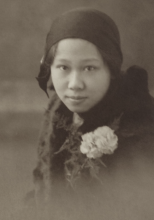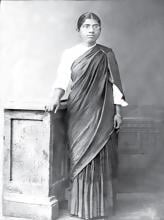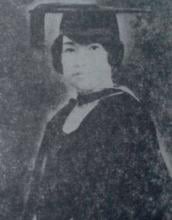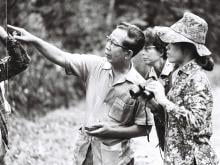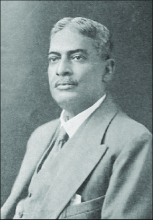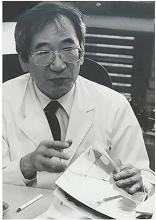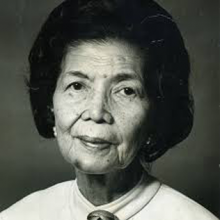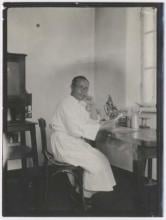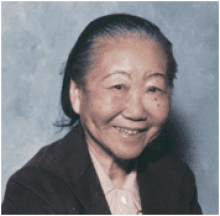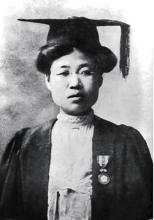Medicine
News

16 May 2006
Established in 1940, the Indian Journal of Dermatology, Venereology and Leprology is the official publication of the IADVL (Indian Association of Dermatologists, Venereologists and Leprologists). It is a bimonthly peer-reviewed journal that reaches all 3500 members of this organization as well as almost 100 medical colleges in India.

16 May 2006
Dyslexia is a major educational problem, but the studies on genetics of dyslexia are very limited in India. There is a great dearth of proper statistical data to show the incidence of dyslexia in Indian population. More over inheritance pattern of dyslexia is not well established in our population.

16 May 2006
Indian Journal of Human Genetics (ISSN 0971-6866), Official Journal of the Indian Society of Human Genetics,

16 May 2006
A totally allogeneic graft material that would eliminate the need for harvesting bone from patients has been produced. The experiment involved thirty-six critical size defects which were created in the bones of 18 rabbits.

14 May 2006
New players in the process of metastasis of cancer cells are described in a paper in the June issue of Nature Cell Biology. Sung Hee Baek and colleagues also present a novel means of controlling proteins that direct metastasis.

14 May 2006
NATURE AND THE NATURE RESEARCH JOURNALS PRESS RELEASE - For papers that will be published online on 14 May 2006

13 May 2006
The borehole started to operate in November 2002. Results of the medical examination in Iransha Village settlement showed that human health improved considerably because of the use of fresh water.

11 May 2006
Chikungunya is a relatively rare form of viral fever caused by an alphavirus that is spread by bite of an infected Aedes aegypti mosquito. The precise reasons for its re-emergence in the Indian subcontinent as well as the other small countries in the southern Indian Ocean are an enigma.

11 May 2006
IJMM is the official publication of Indian Association of Medical Microbiologists (IAMM)

11 May 2006
Published since 1955, Indian Journal of Dermatology continues to be one of the pioneer medical journals from India. Since its inception, the Journal publishes information relating to skin, its ailments and the different modes of therapeutics. It also carries articles on Leprosy, STI and HIV/AIDS.

10 May 2006
Summaries of newsworthy papers from Nature. VOL.441 NO.7090 DATED 11 MAY 2006 including Space ball survived massive impact; Noble gases enter the Earth's mantle from sea water; Turning superconductors on; Silicon feels the strain; Buoyancy vests for six-legged scuba divers

10 May 2006
Journal of Postgraduate Medicine, a multidisciplinary quarterly biomedical journal, is one of the oldest medical journals from India.

10 May 2006
Robotic laparoscopic surgery is evolving to include in vivo robotic assistants (i.e. placing the robot completely within the human body). Analysis of 151 consecutive general surgical patients over three months showed that 40% used some form of complimentary or alternative medicine (CAM).

08 May 2006
Neurology India (ISSN 0028-3886) is quarterly publication of Neurological Society of India.

07 May 2006
NATURE AND THE NATURE RESEARCH JOURNALS PRESS RELEASE - For papers that will be published online on 7 May 2006

04 May 2006
Effect of feeding different phosphorus levels and depletion on the performance and blood biochemicals in broilers

03 May 2006
Why is it that we do not see enough early prostate cancer in our urological practice? Is it really uncommon, or is it that we are not convinced about the need for its aggressive management? This study intended to look at the opinion and patterns of practice among urologists in Tamil Nadu and Pondicherry, with regards to early prostate cancer.

03 May 2006
The properties of the holmium laser prevent the occurrence of these adverse events. We report the successful use of this technology in resecting the gland in patients on a permanent cardiac pacemaker implant.

03 May 2006
2 teams reveal that a mutant protein implicated in inherited Parkinson’s disease disables the cell’s mitochondria; Researchers report the 1st conducting plastic that shows the signature of a true metal; A fish species that lived more than 400 million years ago may represent a bridge between two lineages that went on to dominate the modern world

03 May 2006
Summaries of newsworthy papers from Nature. VOL.441 NO.7089 DATED 04 MAY 2006

03 May 2006
“Gain of function” gene mutations associated with neonatal diabetes are now thought to be responsible for a range of other neurological dysfunctions.

30 Apr 2006
New information on the complex interplay between host cells and bacteria during infection is reported in the June issue of Nature Immunology. Three studies provide a new understanding of the relationship between salmonella bacteria and the cells infected.

30 Apr 2006
Studies in recent years have shown that some brain regions continue to generate new neurons even during adulthood. Scientists have identified a new target for an old drug that has been used to treat tuberculosis for over 50 years.

29 Apr 2006
Implementing rational drug use: A success story; Exploring Indian medicinal plants for antiulcer activity; Development of new incretin drugs; Activity of some medicinal plants against certain pathogenic bacterial strains The role of pharmacologists: Present and future; Research defence society

29 Apr 2006
Papers include - Ageing male and testosterone; Is India ready for subspecialization and group practice? Analysis of prostate cancer; Should the aspirin be stopped before trans-urethral surgery? Role of needle biopsy in solid renal masses: When does the pudding require a proof? Traumatic dislocation of testis.

29 Apr 2006
If we take the success story of Punjab in introducing and developing forensic nursing in the state it can be role model for the development of forensic nursing anywhere in the world.

26 Apr 2006
Rapid treatment and isolation of not just infected cases but also their household contacts will be the key elements of an effective strategy to beat a future influenza pandemic, report researchers who have simulated the spread of such an outbreak in both Great Britain and the United States.

26 Apr 2006
Summaries of newsworthy papers from Nature. VOL.440 NO.7088 DATED 27 April 2006 including :LOX stops the spread and ‘Top dog’ determined in the womb

23 Apr 2006
NATURE AND THE NATURE RESEARCH JOURNALS PRESS RELEASE - For papers that will be published online on 23 April 2006
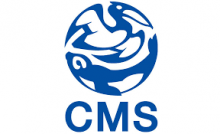
21 Apr 2006
The goal of the meeting was to address migratory bird populations and environmental aspects in the current Asian lineage Highly Pathogenic Avian Influenza (HPAI) virus subtype H5N1 epidemic. Sound scientific information, including an understanding of the environment and migratory bird populations, is a necessity for understanding the epidemic
Researchers
Sorry, no researchers coming up for this topic.
- « first
- ‹ previous
- 1
- 2
- 3
- 4
Giants in history
Michiaki Takahashi (17 February 1928 – 16 December 2013) was a Japanese virologist who developed the first chickenpox vaccine.
Irene Ayako Uchida’s (8 April 1917 – 30 July 2013) strides to understand genetic diseases such as Down syndrome paved the way for early screening of chromosomal abnormalities in foetuses.
Baron Kitasato Shibasaburo (29 January 1856 – 13 June 1931) was a Japanese physician and bacteriologist whose work led to a new understanding of preventing and treating tetanus, diphtheria and anthrax.
Maggie Lim (5 January 1913 – November 1995) was a Singaporean physician who promoted family planning and expanded the access to clinics to improve the quality of life for mothers and children in Singapore’s early days.
By isolating soil microorganisms and studying the compounds they produce, Satoshi Omura (born 1935) discovered almost 500 organic compounds with unique properties that were produced by these microorganisms, including many new antibiotics.
The founder of the Adyar Cancer Institute in India, Muthulakshmi Reddy (30 July 1886 – 22 July 1968), fought to uplift women and girls from impoverished situations.
Chinese-American virologist and molecular biologist Flossie Wong-Staal (27 August 1946 – 8 July 2020) was the first scientist to clone HIV and determine the function of its genes.
Maharani Chakravorty (1937 – 2015) was one of India’s earliest molecular biologists whose research paved the way for advances in the treatment of bacterial and viral infections.
Archana Sharma (16 February 1932 - 14 January 2008) conducted research into plant and human genetics that expanded the understanding of both botany and human health. In relation to botany, she uncovered the means by which asexually-reproducing plants evolve into new species.
The first Thai woman to receive a degree in medicine, Margaret Lin Xavier (29 May 1898 – 6 December 1932), is best remembered for her compassion towards her less privileged patients.
In 1915, pathologist Katsusaburo Yamagiwa and his research assistant Koichi Ichikawa became the first to prove that chronic exposure to chemicals can cause cancer.
In 1915, Koichi Ichikawa along with pathologist Katsusaburo Yamagiwa became the first to prove that chronic exposure to chemicals can cause cancer.
Husband and wife team, Kimishige (3 December 1925 – 6 July 2018) and Teruko Ishizaka (28 September 1926 – 4 June 2019) discovered the antibody class Immunoglobulin E (IgE) that triggers allergic reactions. They also discovered that IgE antibodies attach to white blood cells, known as mast cells, releasing histamine, which causes allergic reactions.
Husband and wife team, Kimishige (3 December 1925 – 6 July 2018) and Teruko Ishizaka (28 September 1926 – 4 June 2019) discovered the antibody class Immunoglobulin E (IgE) that triggers allergic reactions. They also discovered that IgE antibodies attach to white blood cells, known as mast cells, releasing histamine, which causes allergic reactions.
Japanese chemist Takamine Jokichi (3 November 1854 – 22 July 1922) founded the Tokyo Artificial Fertilizer Company, where he isolated a starch-digesting enzyme (named takadiastase) from the fungus Aspergillus oryzae.
Ground-breaking cancer researcher Kamal Jayasing Ranadive (8 November 1917 – 11 April 2001) advanced the understanding of the causes of leukaemia, breast cancer and oesophageal cancer through the use of animal models. She was also among the first to recognise how susceptibility to cancer is linked to tumour-causing interactions between hormones and viruses.
The research of Filipino pharmaceutical chemist Luz Oliveros-Belardo (3 November 1906 – 12 December 1999) focussed on essential oils and other chemicals derived from native Philippine plants.
Thai physician and conservationist Boonsong Lekagul (1907 – 1992) made major contributions to the preservation of his country’s wildlife.
Indian scientist and physician Upendranath Brahmachari (19 December 1873–6 February 1946) is best known for creating a drug called Urea Stibamine, used to safely and reliably treat visceral leishmaniasis (or Kala-azar), a severe infection caused by the Leishmania parasite.
Filipino chemist and pharmacist Manuel A. Zamora (29 March 1870 – 9 July 1929) is best remembered for his discovery of the tiki-tiki formula to combat beriberi, a disease caused by Vitamin B1 deficiency.
Korean parasitologist Seung-Yull Cho (16 November 1943 – 27 January 2019) is remembered largely for his pioneering works to control infections caused by helminthic parasites and his contribution to journal publishing.
Fe Villanueva del Mundo (27 November 1911 – 6 August 2011) was a Filipina paediatrician who founded the Philippines’ first paediatric hospital.
After witnessing death and suffering as a youth in his home village during World War II, Nguyễn Tài Thu (6 April 1931 – 14 February 2021) set his sights on alleviating pain by becoming a doctor. After studying Traditional Chinese Medicine in China in the 1950s, Thu returned to Vietnam to serve in military hospitals. Eventually, he became the country’s foremost practitioner of acupuncture, a technique he first learned by inserting needles into himself.
Minoru Shirota (April 23, 1899 – March 10, 1982) was a Japanese microbiologist who invented the popular fermented drink Yakult.
Wu Lien-teh (10 March 1879 – 21 January 1960) was a Malaysian-born doctor who invented a mask that effectively suppressed disease transmission. Winning the prestigious Queen’s Scholarship enabled Wu to become the first Chinese student to study medicine at the University of Cambridge.
David T. Wong (born 1936) is a Hong Kong-born American neuroscientist who is best known for discovering the antidepressant drug fluoxetine, better known as Prozac.
Indian organic chemist Asima Chatterjee (1917 to 2006) studied the medicinal properties of plant products, especially compounds known as vinca alkaloids.
Chika Kuroda (24 March 1884 – 8 November 1968) was a Japanese chemist whose research focussed on the structures of natural pigments.
Umetaro Suzuki (7 April 1874 – 20 September 1943) was a Japanese scientist best remembered for his research on beriberi, a disease caused by vitamin B1 deficiency, characterized by limb stiffness, paralysis and pain.
Salimuzzaman Siddiqui (19 October 1897 – 14 April 1994) was an artist and chemist from Pakistan whose research focused on natural products from plants.
Barry Paw (29 August 1962 – 28 December 2017) was a biologist and oncologist who discovered several novel genes and their functions in red blood cells.
Syed Qasim Mehdi (13 February 1941 – 28 September 2016) was a Pakistani molecular biologist who was a founding member of the Human Genome Diversity Project (HGDP), which assessed human diversity by studying human migration, mutation rates, relationships between different populations, genes involved in height and selective pressure.
Tsai-Fan Yu (1911 – 2 March 2007) was a Chinese-American physician and researcher who was the first female full professor at Mount Sinai School of Medicine. She discovered that gout, a condition characterized by the painful inflammation of joints, was caused by elevated levels of uric acid in the bloodstream.
Min Chueh Chang (10 October 1908 – 5 June 1991) was a Chinese-American biologist who studied fertilization in mammalian reproduction.
A Japanese surgeon, Tetsuzo Akutsu (20 August 1922 – 9 August 2007) built the first artificial heart capable of keeping an animal alive.
Ogino Ginko (3 March 1851 – 23 June 1913) was the first registered female doctor to practise modern medicine in Japan.
Esther Park (1877-1910), born Kim Jeom-dong, was the first female Korean physician to practise modern medicine in Korea and trained the first generation of Korean female doctors.





